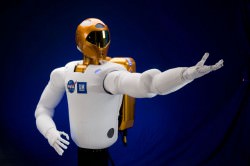How 1Gbps fiber came to Cleveland's poorest, free of charge

In the middle of one of America's poorer cities, residents are about to get an unexpected gift: one gigabit per second Internet access over fiber optic cables courtesy of Cleveland's Case Western Reserve University.
According to the school's vice president for Information Technology Services, Lev Gonick, 72 percent of the homes around campus have no Internet access of any kind; 60 percent are on food stamps. "On a national scale, neighbors of the University have as much Internet access as Panamanians or Vietnamese," he wrote last year in a blog entry announcing the school's new project.
That's slowly changing as the university embarks on an ambitious research project to roll out 1Gbps Internet access to the immediate neighborhood, possibly extending this testbed network to 25,000 total Cleveland residents in total.
While most of the US has to live without any fiber at all, residents near University Circle are getting two strands apiece.
How much will it cost the residents? Nothing. The project is a research-driven attempt to find out if broadband can deliver more than e-mail and Web browsing. Can it provide what the community truly needs—public safety, more educational opportunities, and better medicine?Case Western Reserve doesn't yet know, but within a year, it plans to find out.
Fiber: can it make a neighborhood safe?
The school has a long history of working with fiber internally. Back in networking's Dark Ages—1989—the school had gone so far as to wire fiber to every outlet, offering 10Mbps Ethernet connections at a time when Cat3 was still the main twisted pair standard.
In 2001, Gonick became CIO and the university decided that the future was 1Gbps. It set about upgrading every outlet on campus to that speed.
By 2009, it realized that this bandwidth bounty could be pushed into the surrounding community and used as a testbed to find out just how a transformative truly high speed broadband might (or might not) be.
Given the school's location, public safety was the first priority for the deployment. No less than six separate public safety communities exist right in University Circle, and a fast broadband network could make it easier for them to share video feeds, share dispatching technology, and improve their coordination. In the neighborhoods around the school, a fat broadband pipe could make it easy to do remote video monitoring—in fact, two local apartment building owners have already told Gonick that they plan to use the new fiber build to help monitor each other's buildings. (See a video tour of the neighborhoods around the school below.)
Case Western Reserve researchers also want to see how the network is used for health care, education, and power. Smart grid technologies are one key component of the deployment; residents will have access to high tech thermostats, for example, which can display their home's energy use compared to that of their neighbors or to the neighborhood. On health care, providers like the Cleveland Clinic will use the network to see what sort of cost savings and care benefits might be wrung out of HD video conferencing with patients and automated home health monitoring gear.
The school has partnered with a host of community institutions on the project, encouraging each to develop its own "killer app" for the network within the next 18 months that the project will run. After that, the university hopes to get out of the business of running the network.
The entire network is being run on the "open access" model in which any provider—clinic, pay-TV operator, education network, power company—can access the connection. Gonick tells Ars that three video providers are already interested in selling their services over the link, providing a perfect example of how open access fiber can sever the link between infrastructure and provider that exists in most current cable and telco deployments.
The result, if all goes well: competition.
The buildout
The network build is now underway. The first "beta block" of 104 homes is currently being wired, while a second block has already been identified for future service. A demonstration center is already lit and running, with the official ribbon cutting for the beta block scheduled for May 23.
When it comes to the commercial competitors, such as traditional ISPs and pay-TV providers, the reception has been a bit cooler. Gonick stresses that this is a research program and is totally appropriate for a university to do, and he notes that the school has not "hidden this project at all" from local ISPs.
Jeff Gumpf, the IT architect for the school, tells Ars that the system is meant to last three decades or more, a decision that dictated the network design. Case Western Reserve first consulted with Herman Wagter, who ran Amsterdam's CityNet fiber-to-the-home build (and just described that process in great detail for Ars), about the architecture. Gumpf and Gonick took his advice: two fiber strands to every home, each running back to the main equipment room (point-to-point, rather than shared, fiber).
This approach costs more in the short term due largely to the cost of all that additional fiber, but compared to the cost of digging up the streets to lay more fiber in the future, doing it first is a terrific bargain. Only one strand will be lit initially, with the second strand in place simply to future-proof the deployment.
Case Western Reserve had trouble finding the gear that each home would use to terminate the fiber connection. Here, Wagter helped them out again, hooking them up with European equipment maker Genexis, which makes power-efficient, installer-friendly home gateways that take a fiber connection on side and spit out voice, data, and video connections on the other.
The plan has already garnered attention from Washington; indeed, it is the first example cited in the National Broadband Plan's "Research and Development" chapter. In essence, Case Western Reserve is doing the research to find out how one of the plan's key priorities might affect local communities—the plan to wire up all "anchor institutions" in the US with 1Gbps fiber, then treat them as "middle-mile" ISPs who can help push that bandwidth out into the surrounding community by partnering with companies and municipalities.
Gonick has already done his homework when it comes to working with the politicians; he wants the entire deployment to be "mayor-proof," not tied to any particular politician whose successor might kill the scheme. The City of Cleveland is on board with the deployment, as are local hospitals, equipment vendors, and community groups, but none can simply veto the plan.
When it comes to the commercial competitors, such as traditional ISPs and pay-TV providers, the reception has been a bit cooler. Gonick stresses that this is a research program and is totally appropriate for a university to do, and he notes that the school has not "hidden this project at all" from local ISPs.
However, when Case Western wrote to those local ISPs for letters of support... it didn't get a single one. Anchor institutions around the country, take note.
Together with Google's similar 1Gbps fiber testbed announcement, such research projects have important roles to play when it comes to policy decisions. Just how important is it to run super-fast fiber to US homes? What will people do with it? Can it truly transform poor or crime-ridden areas? And just how important is an open-access network?
Apart from the Google announcement, similar research is only being done by universities and by those few municipalities who run their own community networks. Case Western Reserve's is one of the most ambitious, and its data should start rolling sometime in 2011.
If the idea works, and if other schools, libraries, and community centers across the US start rolling out similar projects, the landscape for Internet access could change dramatically over the next decade. If it doesn't... well, better to find out now.























































